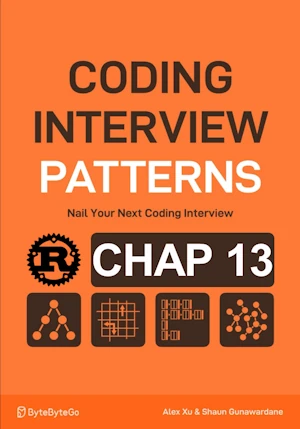Matrix infection

- Given a matrix of
- 0 empty
- 1 uninfected
- 2 infected
- Each sec, every infected cell infects adjacent neighbors cells (4 directions)
- Return the number of sec to infecs all cells. -1 if this is not possible
The point:
- Level order traversal problem
- BFS & queue
- Multi-source BFS
- During the patrix traversal
- add to the queue all infected cells
- count the number of 1
- During the traversal decrement count as more cells are contaminated
Complexity :
| Time | Space |
|---|---|
| O(m x n) | O(m x n) |
- O(m x n) in time because in worst case, every cell is visited during level-order traversal
- O(m x n) in space because the size of the queue (can grow up to m x n)
First implementation
About Rust :
- Check the
for (dr, dc) in &directions{(and the 2 others variants). - Read
253_count_islands.ipynband.iter() - YES : tested on the Rust Playground
use std::collections::VecDeque;
fn matrix_infection(matrix: &mut [Vec<i32>]) -> i32 {
if matrix.is_empty() || matrix[0].is_empty() {
return -1;
}
let (mut ones, mut seconds) = (0, 0);
let mut queue: VecDeque<(usize, usize)> = VecDeque::new();
// Count the number of uninfected cells, add infected cells to the queue
for r in 0..matrix.len() {
for c in 0..matrix[0].len() {
match matrix[r][c] {
0 => {}, // Empty cell
1 => ones += 1, // Uninfected cell
2 => queue.push_back((r, c)), // Infected cell
_ => panic!("Unexpected value"),
}
}
}
// Directions for 4-neighbor connectivity (up, down, left, right)
let directions = [(-1, 0), (1, 0), (0, -1), (0, 1)];
// Use level-order traversal to determine how long it takes
while !queue.is_empty() && ones > 0 {
// 1 sec passes with each each level of the matrix explored
seconds += 1;
let level_size = queue.len();
for _ in 0..level_size { // loop by level
// let (r, c) = queue.pop_front().unwrap();
if let Some((r, c)) = queue.pop_front() {
// Infect any neighboring 1s and add them to the queue
// for (dr, dc) in directions{ // by value, implicit copy
// for &(dr, dc) in &directions { // by reference + only copy what is needed : for &Trio(a, b, _) in &data{ //only a and b copied)
for (dr, dc) in &directions{ // by reference
let new_r = r as isize + dr;
let new_c = c as isize + dc;
if is_within_bounds(new_r, new_c, matrix) {
let (new_r_usize, new_c_usize) = (new_r as usize, new_c as usize);
if matrix[new_r_usize][new_c_usize] == 1 {
matrix[new_r_usize][new_c_usize] = 2;
ones -= 1;
queue.push_back((new_r_usize, new_c_usize)); // push neighbor
}
}
}
}
}
}
// if there are still unifected cells left return -1, otherwise the time passed
if ones == 0 { seconds } else { -1 }
}
fn is_within_bounds(r: isize, c: isize, matrix: &[Vec<i32>]) -> bool {
r >= 0 && c >= 0 && (r as usize) < matrix.len() && (c as usize) < matrix[0].len()
}
fn main() {
let mut matrix = vec![
vec![1, 1, 1, 0],
vec![0, 0, 2, 1],
vec![0, 1, 1, 0]
];
println!("{} sec.", matrix_infection(&mut matrix)); // 3
let mut empty = vec![];
println!("{} sec.", matrix_infection(&mut empty)); // -1
let mut all_infected = vec![vec![2,2], vec![2,2]];
println!("{} sec.", matrix_infection(&mut all_infected)); // 0
let mut impossible = vec![vec![1,0], vec![0,1]];
println!("{} sec.", matrix_infection(&mut impossible)); // -1
}